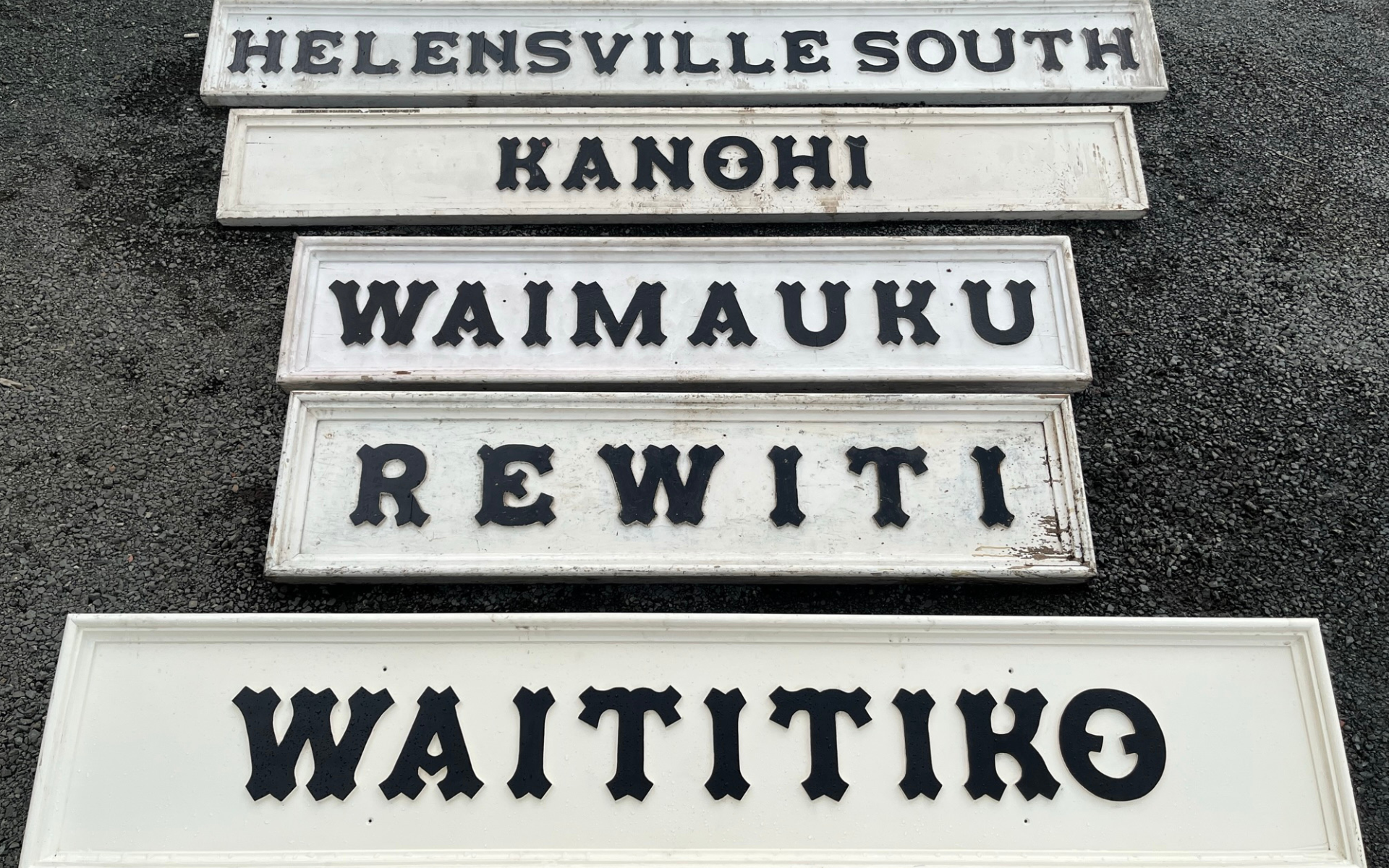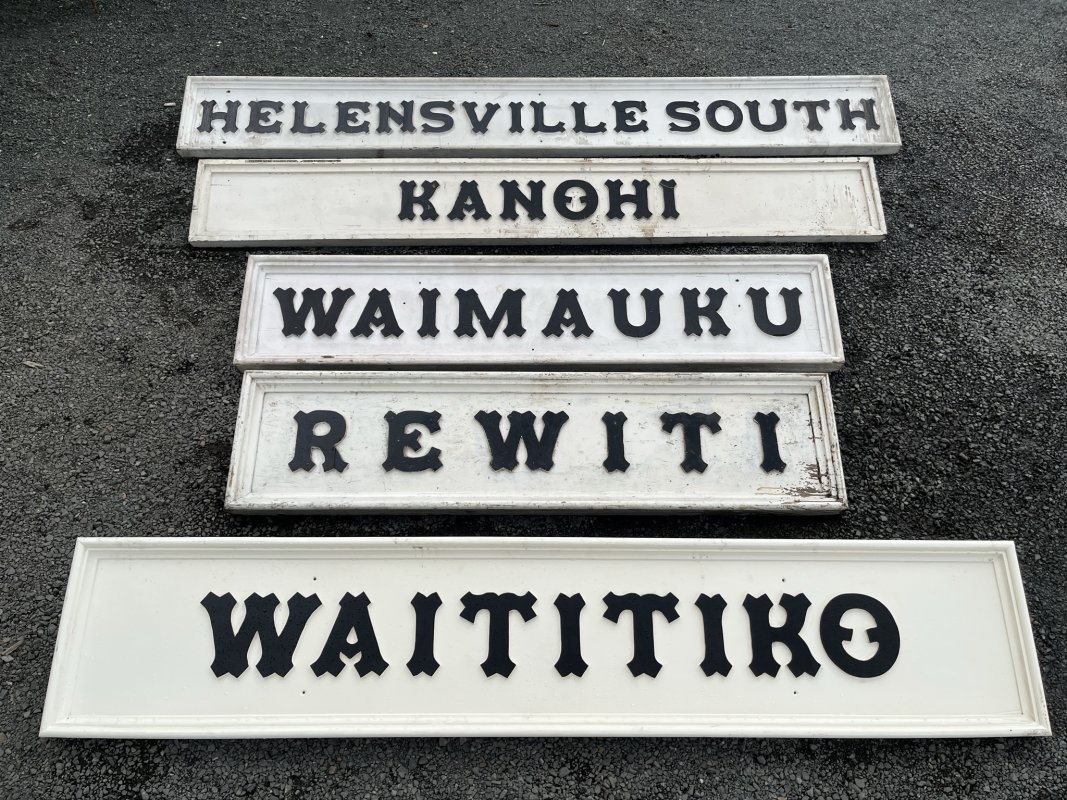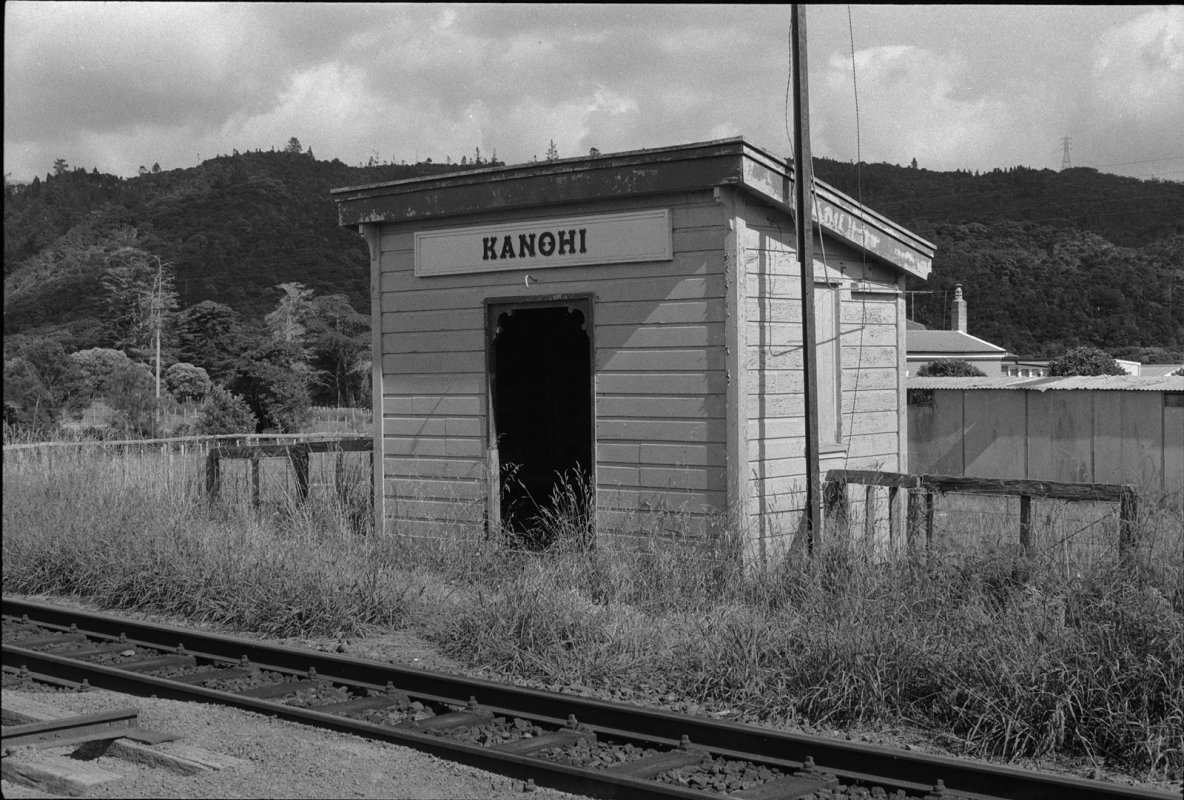Signs of the Times: North Auckland Railway

Since the beginning of railways, it has been common practice to adorn each station along the line with a sign stating the station’s name so that passengers can identify their location. Traditionally in New Zealand, these signs were made of timber, with the station name being painted in big black letters on a white background so it could be easily read. Many of the original signs on the North Auckland Railway were unique in that they were made in a special style not seen anywhere else. The lettering on these signs was made with an ornate font, with each individual letter being cut out of timber and nailed to the backing board before being painted black.

MOTAT is fortunate to hold 6 original examples of these distinctive signs in its collection - running south to north: Swanson, Waitākere, Waimauku, Rewiti, Helensville South, and Kanohi. There are also two signs made about 10 years ago in the same style for the 2 stations on MOTAT’s railway: Keith Park and Waitītko.

There is a small amount of variation in each of these station signs depending on when it was manufactured. The oldest three signs are the same: Waimauku, Rewiti, and Helensville South. These stations were opened in 1875 when the section of the railway between Riverhead and Helensville was completed. Helensville South was the terminus for the Kaipara – Riverhead Railway, while Waimauku was opened as a flag station with an attending signalman and Rewiti as an unattended passenger and parcel station. This line was opened during the kauri trade boom and would move felled timber to a wharf in Riverhead where it could be boated to the Waitematā Harbour.

Waitākere and Swanson’s signs are identical to each other but don’t have some of the beadings fitted to the older signs. These two stations were opened in 1881 when the line from Auckland reached Kumeu (resulting in the closure of the temporary Kumeu to Riverhead ‘Portage Railway’). Both stations formed part of the North Auckland Line and were flag stations attended by a signalman, receiving passenger and freight traffic.

Finally, Kanohi was opened to goods in 1889 and passengers in 1897 but didn't get a shelter shed until 1901. This sign is the most unusual of all and is massively long when compared with the actual name of the station! Kanohi was closed to passengers with the withdrawal of Northland railcar services on 31 July 1967 and then completely closed on 9 July 1978.

Waimauku, Rewiti, and Helensville South were closed on 30 November 1980 with the withdrawal of suburban passenger services from Auckland. The original Waimauku Station building was burnt down on 10 January 1983, but the station was reopened in July 2008 for the short-lived resumption of passenger services to Helensville which subsequently ceased in December 2009. The Waitākere station building was taken to MOTAT for preservation in September 1972 and can today still be seen proudly on display at the Great North Road site. Passenger trains continued to call at Waitākere until July 2015 when suburban train services were truncated to terminate at Swanson.
Come see some of these stations up close at MOTAT Live Days, every third Sunday of the month (excluding December).
Story by Graham Anderson, Collection Workshops Manager, MOTAT
Citation:
Anderson, Graham, 2022. Signs of the Times: North Auckland Railway. MOTAT Museum of Transport and Technology. Published: 17 November 2022. URL: https://www.motat.nz/collections-and-stories/stories/signs-of-the-times-north-auckland-railway
Find more stories about the past, present, and future technology of Aotearoa here.